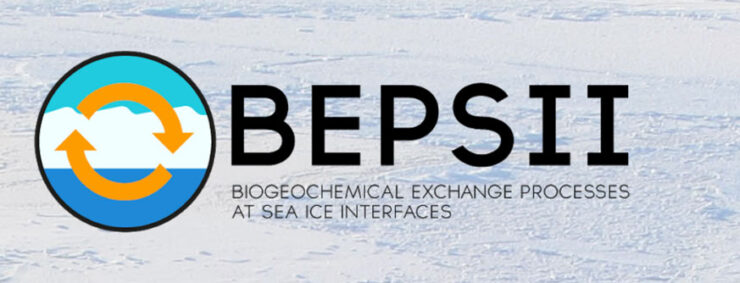 Members of the Biogeochemical Exchange Processes at Sea-Ice Interfaces (BEPSII) network have authored a comprehensive book chapter on Sea-Ice Ecosystems, now published in Comprehensive Cryospheric Science and Environmental Change.
Members of the Biogeochemical Exchange Processes at Sea-Ice Interfaces (BEPSII) network have authored a comprehensive book chapter on Sea-Ice Ecosystems, now published in Comprehensive Cryospheric Science and Environmental Change.
The chapter, written by Letizia Tedesco, Nadja Steiner, and Ilka Peeken, explores why sea ice is one of Earth’s most important ecosystems and examines the diversity of life that depends on it. It highlights the latest methods and models used to study sea-ice biology, assesses the impacts of climate change, and considers ecological and conservation implications of sea-ice management. Richly illustrated and designed to support both teaching and research, the chapter provides an accessible and up-to-date overview for scientists, students, and policymakers alike.
Abstract:
Sea ice plays a crucial role not only in the global climate system but also as one of the planet’s largest biomes, seasonally covering up to 25 million km² of the ocean surface. It provides a diverse range of habitats that are essential components of polar marine food webs. A variety of organisms inhabit its brine channels or are closely associated with sea ice, and certain species rely heavily on its presence for breeding, feeding, or shelter. These linkages enable sea-ice ecosystems to provide numerous ecosystem contributions, including supporting biodiversity, carbon sequestration, and food security. Any physical changes resulting from climate change or climate interventions can directly impact species survival, potentially leading to cascading effects throughout the entire food web, and ultimately affecting human communities dependent on these ecosystems. Conservation is key for safeguarding healthy sea-ice ecosystems, exemplifying the reciprocal relationships between nature and people, thereby highlighting the importance of integrated management approaches that consider ecological, cultural, and socio-economic dimensions.
Tedesco, L., Steiner, N., & Peeken, I. (2025). Sea-Ice Ecosystems. In Comprehensive Cryospheric Science and Environmental Change, pp. 439–467. Ed. Claire Eayrs, Elsevier. https://doi.org/10.1016/B978-0-32-385242-5.00043-9
